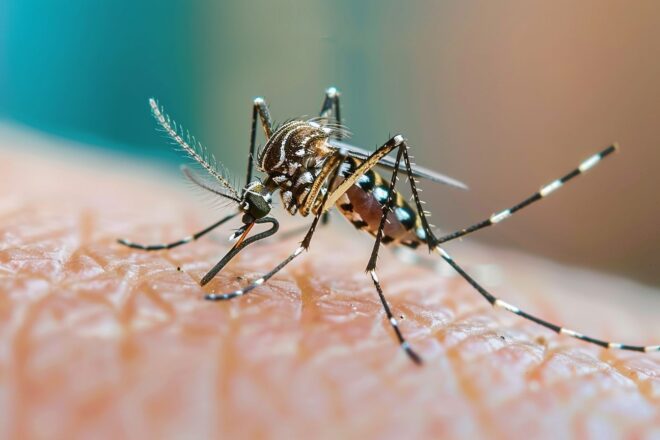Preventing dengue fever

Dengue fever, also known as ‘tropical flu’, is an infectious disease caused by the virus of the same name.
How is the virus transmitted?
The virus is transmitted to humans by mosquitoes of the Aedes genus. The incidence of dengue is currently rising sharply, making it one of the so-called ‘re-emerging’ diseases. 5.2 million cases reported worldwide in 2019. 50% of the world’s population live in a high-risk area.
What are the symptoms?
The majority of infected people have only mild symptoms, or none at all.
Classic’ dengue fever is characterized by a high fever, often accompanied by headaches, nausea and vomiting. Although very debilitating, ‘classic’ dengue fever is not considered to be a severe disease.
In some patients, the disease can develop into ‘severe’ dengue fever. It generally appears after the initial fever has subsided and is characterised by two serious forms:
- Dengue haemorrhagic fever: severe abdominal pain, persistent vomiting, associated symptoms are multiple haemorrhages, particularly gastrointestinal, cutaneous and cerebral.
- Dengue fever with shock syndrome. This form, which is fatal, is characterised by :
– circulatory collapse, i.e. a profound failure of circulatory function, manifested for example by a collapse in blood pressure, extreme tachycardia, pallor sometimes associated with cyanosis, etc.
– o and multivisceral failure, i.e. rapid deterioration of one or more organs or viscera.
A person infected a second time is at greater risk of developing severe dengue fever.
How can infection be prevented?
Prevention is mainly based on vector control, i.e. fighting the mosquitoes that spread the virus, and individual protection measures: eliminating stagnant water, using repellents, wearing covering clothing and installing mosquito nets. Insecticides can also be used, but their widespread use can lead to resistance in mosquito populations, making them less effective.